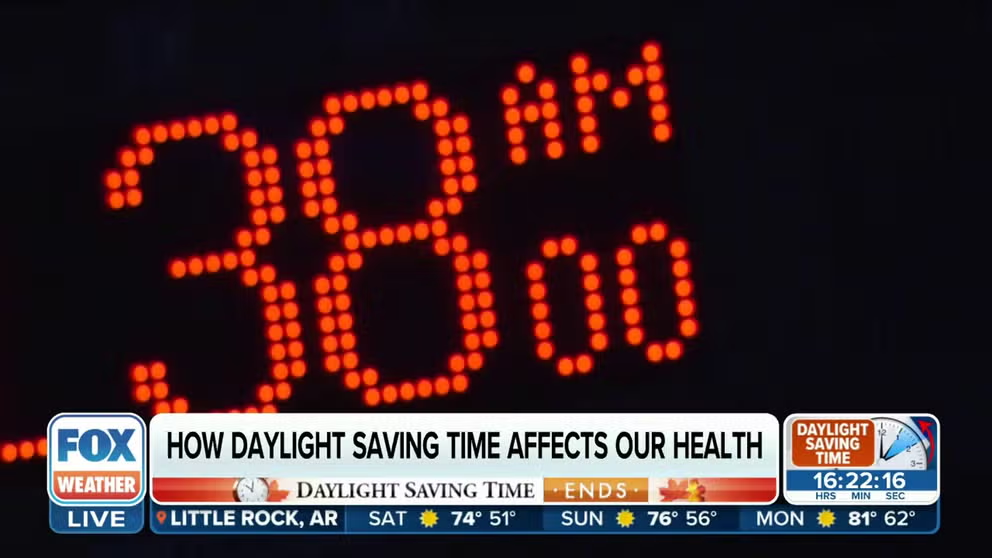Fall back: Daylight saving time ends this weekend for most of US
Daylight saving time ends on the first Sunday in November. This year you'll gain one hour of sleep on Sunday, Nov. 3, when the clocks fall back at 2 a.m.
How does the time change disrupt sleep?
FILE VIDEO: Daylight saving time is coming to an end on Sunday, and it's a bittersweet moment for many people. Adjusting to the change can be challenging, and it seems like it never gets easier every year. To help us cope with this transition, Dr. Brian Chen, a sleep doctor at the Cleveland Clinic, shares some valuable advice with FOX Weather.
This Sunday marks the end of daylight saving time when most people across the U.S. fall back, moving their clocks back by one hour.
This is your notice that the time change is coming. Here's what you need to know about the end of daylight saving time and how to prepare yourself and your family before it happens.
When does daylight saving time end?
Clocks will officially move back an hour at 2 a.m. Sunday.
If you use your smartphone as an alarm, there is no need to do anything. However, if an analog or digital clock not connected to Wi-Fi is your wake-up reminder, go ahead and set the clock back one hour before you go to bed.
THE HISTORY OF DAYLIGHT SAVING TIME
Daylight saving time is observed from the second Sunday in March to the first Sunday in November, according to the U.S. Department of Transportation. The USDOT has overseen the time change since 1966, when Congress transferred responsibility from the Interstate Commerce Commission.

An alarm clock on bedside table.
(iStock / FOX Weather)
Where does the time change in the US?
Everywhere in the U.S., except Hawaii and most of Arizona, observes the time change; those states remain on standard time year-round. To make matters more confusing, the Navajo Nation in Arizona does observe DST. Some U.S. territories, including Puerto Rico and the Virgin Islands, do not change their clocks twice yearly.
DAYLIGHT SAVING TIME 2024: WILL SUNSHINE PROTECTION ACT MAKE DST PERMANENT?
There have been several attempts to make daylight saving time the year-round standard through the Sunshine Protection Act. However, the bill has yet to make it through the House and to the president's desk to become law.
How parents can help children adjust to end of daylight saving time
The transition to standard time and vice versa can be rough for little ones and their parents. Several sleep experts have recommendations for helping your children adjust to the time change.

A baby girl sleeps with a stuffed animal. (Image: Adobe Stock)
(Adobe Stock)
The baby sleep gurus of "Moms on Call" have five steps to transitioning into standard time, starting with putting your child to bed at their normal time on Saturday night.
According to Moms on Call, the transition could take about three days until the family is adjusted to the time change.
The biggest suggestion by all sleep experts is to stick to your bedtime routine, whether that's a bottle, bath and a book or whatever order works for your little one.
